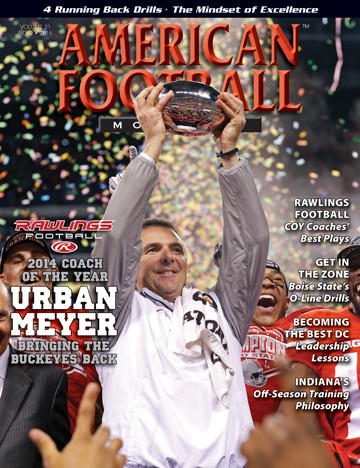Article CategoriesAFM Magazine
|
From the Coach’s Bookshelf – The New QB Gurus© More from this issueMost coaches would agree that quarterback is the most critical position in the sport. This past decade has seen the boom of the specialized private quarterback-coach business, transforming the position and the game. Former Super Bowl winning quarterback Trent Dilfer is one of this new breed, running the prestigious Elite 11 camp and starting his own training method. In this excerpt from The QB – The Making of Modern Quarterbacks, veteran sports writer and bestselling author Bruce Feldman gives an inside look at the private quarterback training business. One by one they each gazed up at – and then hurried past – the eight-foot-tall bronze statue of Woody Hayes, posed leaning slightly forward with his hands on his hips, standing in front of the Ohio State athletic center bearing his name. Few of the two dozen QB gurus arriving from....The full article can only be seen by subscribers.
|
|
|||||||
| HOME |
MAGAZINE |
SUBSCRIBE | ONLINE COLUMNISTS | COACHING VIDEOS |
Copyright 2025, AmericanFootballMonthly.com
All Rights Reserved





